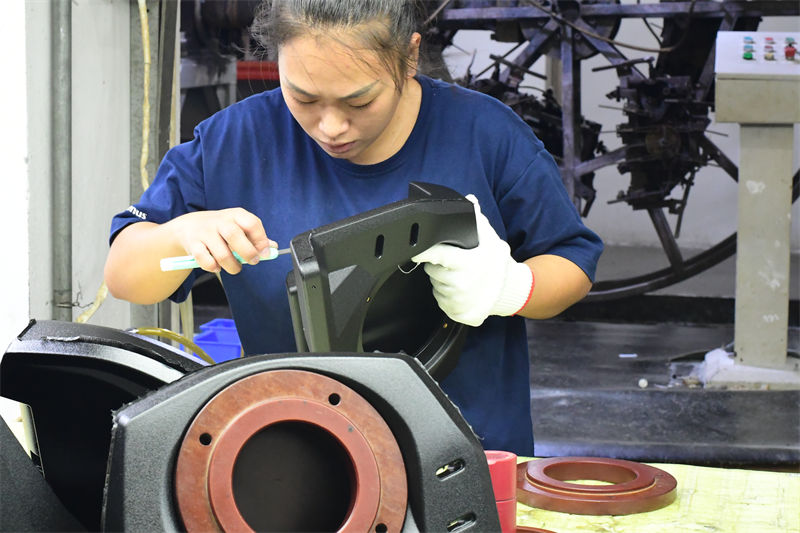How to Test the Surface Hardness in Rotational Molding Process?
 Feb 01,2024
Feb 01,2024

How to Test the Surface Hardness in Rotational Molding Process?
Surface hardness is a critical quality attribute for rotational molding products, as it directly impacts their durability, resistance to wear, and overall performance. Below is an overview of surface hardness testing in rotational molding process and the guidance on how to test surface hardness effectively.
Methods for Surface Hardness Testing
There are several methods for testing the surface hardness of rotational molded parts, including:
1. Shore D Hardness Test
The Shore D hardness test is a common method used to measure the surface hardness of plastic materials. It involves pressing a durometer onto the surface of the material and measuring the depth of penetration. The higher the number, the harder the material. To perform this test on a rotational molded part, select a few areas on the surface and press the durometer onto the surface with a specified force for a specified time. Record the hardness readings for each area and calculate the average.
2. Barcol Hardness Test
The Barcol hardness test is another method used to measure the surface hardness of plastic materials. It involves using a handheld device with a hardness probe that is pressed onto the surface of the material. The device measures the resistance to penetration and provides a hardness reading. To perform this test on a rotational molded part, select a few areas on the surface and press the probe onto the surface with a specified force for a specified time. Record the hardness readings for each area and calculate the average.
3. Rockwell Hardness Test
The Rockwell hardness test is a more precise method used to measure the surface hardness of plastic materials. It involves using a hardness testing machine with a diamond or ball indenter that is pressed onto the surface of the material. The machine measures the depth of penetration and provides a hardness reading. To perform this test on a rotational molded part, select a few areas on the surface and press the indenter onto the surface with a specified force for a specified time. Record the hardness readings for each area and calculate the average.
Test Procedure
To perform a surface hardness test on a rotationally molded product, below are steps
1. Sample Preparation: Select a representative sample from the molded product for testing. Ensure that the sample is flat and smooth.
2. Calibration: Calibrate the hardness testing instrument according to the manufacturer's instructions.
3. Test Setup: Place the sample on a flat and stable surface. Ensure that the testing instrument is clean and free from any damage.
4. Measurement: Press the hardness testing instrument against the sample's surface with a consistent force. Record the hardness reading displayed on the instrument.
5. Multiple Measurements: Take multiple measurements at different locations on the sample to ensure accuracy and consistency.
6. Data Analysis: Analyze the collected data to determine the average hardness of the sample. Compare the results with the specified hardness requirements.
By understanding the importance of surface hardness, selecting the appropriate testing method, properly preparing the product, performing the test accurately, and analyzing the results, Light Venus has the trained and skilled people and required instruments to test effectively the surface hardness of rotomolded product.

 Tel: 0086-13632687993
Tel: 0086-13632687993  Email: roto@lightvenus.com
Email: roto@lightvenus.com

 Home
Home What are the Key Characteristics of Rotomolded Products
What are the Key Characteristics of Rotomolded Products  You May Also Like
You May Also Like



 Tel
Tel
 Email
Email
 Address
Address








